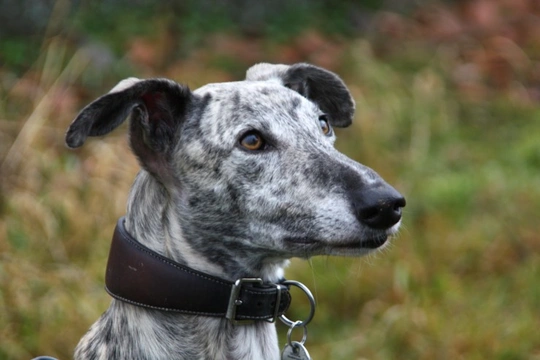
Dogs and collar safety
Because wearing a collar is a daily fact of life for dogs, other than when we need to buy a new collar or get a pup used to wearing one for the first time, we don’t tend to give much thought to the matter, and over time, don’t even really see the collar at all when we look at our dogs.
However, it is important to ensure that the collar you use for your dog is appropriate, which means not only being a good fit and the right type and style to meet your dog’s needs, but also, that the collar should be fitted and used safely, to minimise the risk of accidents.
When it comes to wearing a collar, there are inherent risks involved – although we tend to associate these risks with cats rather than dogs, because cats roam freely and are not always directly supervised.
While problems with dog collars are thankfully rare, they do still pose a risk, however – such as the risk of getting caught on a branch or obstacle, or even on the tooth of another dog, which can lead to serious injuries for all involved and may even cause the collared dog to choke.
In this article, we will share some tips and advice on how to choose, fit and use your dog’s collar, and how to make sure that it is safe and suitable for them. Read on to learn more.
The right collar for your dog
Different types of dogs have different requirements when it comes to collars, in terms of their sizes, materials, construction and shape. For instance, sighthounds like the greyhound are usually seen wearing leather collars that are wide on the top and taper underneath, which help to distribute the pressure feedback provided by the lead across the whole neck, reducing the risk of causing strains or damage to the finely boned neck of the breed.
A collar that is too small or too large in terms of its width as well as its length can cause problems in terms of fitting, comfort and risk, so ensure that you choose the most appropriate collar for your dog, their lifestyle and their activities, and seek advice if you are unsure.
Quick release options
Many dog collars have a one-handed quick release button, which can be used to free the dog’s neck quickly in the event of a problem. However, these quick-release options rarely activate automatically under pressure, which means that very sturdy collars made of synthetic materials are unlikely to break even if pulled around to a great extent.
Obviously it would be a huge problem if your dog’s collar simply snapped from pulling out on a walk, but when it comes to running loose or being unsupervised, using a collar that has a specific, deliberate weaker area that will break under pressure is wise. This may come in the form of looser stitching in a certain area that will snap under high pressure, which can help to prevent choking or hanging on the collar.
Using one collar for your dog’s ID and a separate collar or a harness for walks that is removed at other times makes for a good compromise.
Dangling tags
Many dog owners use their dog’s collars to display their ID in accordance with the law, which states that all dogs should have tags or ID details on them when out in public places. However, tags than hang down or dangle from a loop can pose a potential risk to your dog, because they may catch on protruding branches or obstacles out on walks, as well as being the right size to accidentally catch another dog’s tooth in play.
Avoid using hanging tags, and instead use an engraved plate on the collar itself, or a snug, low-profile fitting without a loop on it. Alternatively, use a jump ring or malleable loop to hold the tag, which will open up or snap under pressure.
Chain link collars
Choke chain collars for dogs have been falling out of fashion for some years now, as we have begun to explore gentler and more effective ways of checking a dog that pulls on the lead. If you do use a chain or choke collar on your dog, this should only be used for on the lead walks, and not as your dog’s regular collar – and the collar should be removed when your dog is running off the lead.
Choke collars are constructed of chain links and loops that can very easily catch on another dog’s tooth or other obstacles, which can cause serious and potentially fatal injuries to either or both dogs involved if two dogs get tangled up.
Should your dog’s collar remain on them at all times?
Dogs must by law have identifying tags or information on them when outside of the home, which means that wearing a collar is a daily facet of canine life. However, some dog owners remove their dog’s collars when at home, which is a personal choice – there are both pros and cons to this, such as eliminating the risk of hanging or choking, but increasing the risk of the dog getting lost if they slip out or escape.
A good compromise is to choose a suitable collar to hold the dog’s ID that is designed to release or snap in an emergency, but keep a separate collar or harness for walks.
It is also important to ensure that your dog’s collar fits snugly (but is not too tight) to reduce the chances of it catching on things – you should be able to fit a finger’s width between your dog’s collar and their neck without having to force it, but no more than that!



